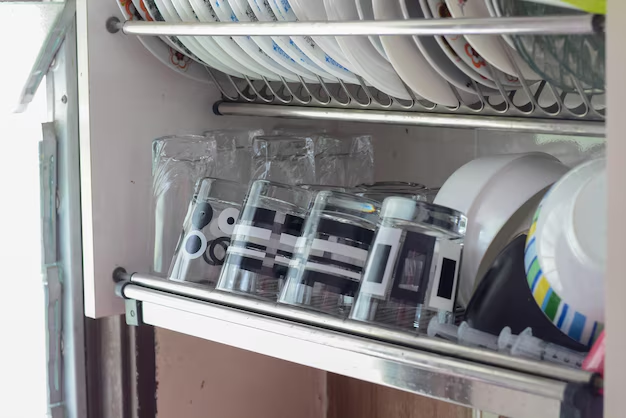Say Goodbye to Moisture in Your Refrigerator: A Complete Guide
The first time you spot moisture in your refrigerator, it's easy to brush off as a minor inconvenience. But over time, excess moisture can lead to a host of issues, from spoilage of food to the growth of mold. Fear not! This guide is here to walk you through practical steps to eliminate unwanted moisture from your fridge, ensuring your food stays fresher and your appliance runs efficiently. Let’s dive into an exploration of causes, prevention techniques, and remedies, transforming your refrigerator from a damp mystery to a dry, organized oasis.
Understanding Why Moisture Builds Up in Refrigerators
Before tackling the problem, it's essential to understand why moisture accumulates inside your refrigerator. This initial knowledge will help in identifying effective solutions.
Common Causes
Frequent Door Opening: Every time you open your fridge, warm air enters and condenses, creating moisture.
Overloading: When there's too much food, air circulation is hindered, leading to increased humidity.
Improper Temperature Settings: A temperature set too high accelerates condensation.
Defrost Issues: Faulty defrost cycles can leave ice build-up that eventually melts into moisture.
Door Seal Problems: Worn or damaged gaskets can allow warm air to seep in.
Consequences of Excess Moisture
- Food Spoilage: Damp environments promote rapid spoilage of perishables.
- Mold Growth: Moisture can foster mold, adding odors and potential health risks.
- Increased Energy Consumption: A moisture-laden fridge often works harder, using more energy.
Understanding these elements guides you toward informed decisions and effective solutions.
Step-by-Step Solutions to Reduce Moisture
Armed with knowledge about causes, let’s explore effective techniques and solutions to combat moisture issues in your refrigerator.
1. Optimize Refrigerator Temperature
Ensuring your refrigerator is at the optimal temperature (usually around 37°F or 3°C) is paramount. Carefully monitor and adjust settings if needed to achieve cold and dry conditions.
2. Regular Maintenance of Seals
Inspect door gaskets regularly for wear and tear. Cleaning and replacing damaged seals can significantly reduce the intrusion of warm air.
3. Strategic Food Arrangement
Follow these tips for efficient food arrangement:
- Avoid overcrowding to enhance air circulation.
- Use storage bins to organize and keep sensitive items sealed.
4. Promote Airflow
- Install Fridge Fan: A small battery-operated fan can help keep air circulating evenly.
5. Dehumidifying Agents
Consider using household items like:
- Baking Soda: Place a small open box to absorb moisture.
- Silica Gel Packets: These can be placed discreetly in corners.
💡 Tip: Keep an eye on these items and replace them periodically to maintain effectiveness.
6. Check for Drainage Blockages
Every refrigerator has a drainage system designed to funnel excess moisture away. Ensure these drains are clear and unobstructed to prevent pooling and subsequent moisture build-up.
Prevention Tips: Keeping Moisture at Bay
Prevention is far more manageable than dealing with an existing problem. Here, we explore preventive strategies to keep your fridge dry.
Fridge Hygiene and Organization
- Regular cleaning schedules to eliminate spillages and moisture residues.
- Ensure items are sealed tightly to prevent liquid leakage and exposure to air.
Efficient Opening Practices
Encourage household members to practice efficient door opening routines, minimizing the frequency and duration of door exposure.
Defrost and Maintenance Checks
Regular checks and maintenance of the defrost function ensure frost does not build up and melt, causing excess moisture.
Professional Check-Ups
Routine professional inspections can preemptively identify issues such as coolant leaks and thermostat malfunctions.
Quick View Summary: Essential Tips to Combat Moisture 🚀
- Inspect and Clean Seals: Regularly maintain door gaskets to secure a tight seal.
- Temperature Control: Adjust fridge settings to optimal cooling conditions.
- Organize for Airflow: Keep items well organized for better air circulation.
- Use Moisture Absorbers: Implement baking soda or silica gel solutions.
- Keep Drainage Paths Clear: Regularly check drainage to ensure no obstructions.
- Efficient Door Usage: Minimize and streamline door opening/duration.
Real-Life Scenarios and Practical Applications
Let’s explore how these strategies come to life through practical scenarios. When Nadia noticed her fruits deteriorating at an accelerated pace, she realized her refrigerator was too warm. By adjusting the temperature and freeing up space, freshness was significantly prolonged.
Similarly, Mark's notice of pooling water alerted him to blocked drainage. By clearing the built-up debris within the drainage channel, his fridge maintained dryness, safeguarding stored goods and keeping them fresh for longer.
The Path to a Fresher, More Efficient Refrigerator
By implementing these techniques, you empower yourself to take control of your kitchen’s atmosphere, maintaining optimal conditions for freshness and energy efficiency. From methodical organization to vigilant maintenance checks, each action you take ripples through your ecosystem, promoting a healthier and more effective storage environment.
📸 Keep this guide at the ready, making it easy to revisit tips and strategies whenever needed. A properly maintained fridge not only cuts down on waste and energy needs but furthers the understanding of sustainable practices—benefiting both your home and the environment.
Moisture doesn't need to be an unresolved issue within your kitchen. Equipped with the right tools and strategies, say goodbye to unwanted dampness, ensuring your refrigerator works as the reliable heart of your home it was meant to be.
